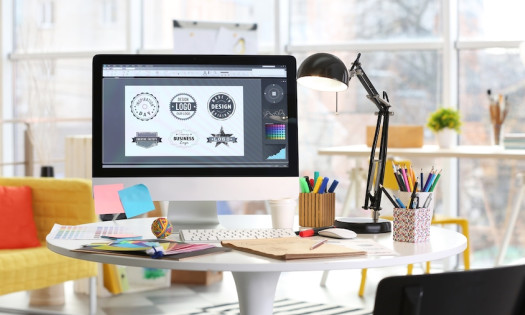Balancing Budget and Quality: Graphic Design Solutions for Small Businesses

In today’s fast-paced business world, the visual impact of your brand can make a significant difference. For small businesses, this often presents a unique challenge: how do you create compelling graphic design that resonates with your audience while adhering to a limited budget? This comprehensive guide delves into the nuances of balancing cost and quality in graphic design, offering actionable insights and solutions tailored for small business needs. For more in-depth insights, check out Graphic Design for Small Businesses. Graphic design is an indispensable tool in establishing a business’s identity and communicating its values. In a landscape filled with competition, a visually striking design can set a business apart. However, small businesses often face the dilemma of limited resources. Investing in high-quality design can seem daunting, and yet, compromising on quality can detract from a brand’s credibility and appeal. The key lies in finding a sweet spot – where budget constraints meet effective design strategies.
Understanding the Importance of Graphic Design in Business
The Role of Design in Branding
Graphic design goes beyond creating visually pleasing elements, it forms the backbone of a brand’s identity. A well-crafted logo, for instance, can speak volumes about a company’s professionalism and ethos.
Impact on Marketing and Communication
In the realm of marketing, graphic design serves as a silent ambassador of your brand. It enhances the effectiveness of communication, ensuring that the intended message is not just delivered, but also resonates with the audience.
Strategies for Budget-Friendly Design
Leveraging Free and Affordable Tools
There are numerous free and low-cost graphic design tools available that can produce professional results without breaking the bank. These tools often come with templates and easy-to-use interfaces, making them accessible even to non-designers.
Exploring Freelance Marketplaces
Freelancers can offer more affordable rates compared to design agencies. Platforms like Upwork or Fiverr are great places to find talented designers who can work within your budget.
Balancing Cost and Quality
The Art of Making Smart Choices
When it comes to graphic design, small businesses often face the challenge of balancing cost with quality. This balance is not about choosing one over the other but about making smart, informed decisions. It’s essential to recognize that investing in good design is not merely an expense; it’s an investment in your brand’s future. High-quality design makes your business stand out and can significantly influence customer perceptions and decisions.
Knowing Where to Invest
Identify which aspects of graphic design are most crucial for your business. Is it the logo, website design, or marketing materials? Once you know where design matters most, you can allocate your budget more effectively. For instance, investing in a great logo can pay dividends for years, while other design elements might be more flexible in terms of budget.
Embracing Flexibility and Creativity
Sometimes, constraints can breed creativity. A limited budget can inspire unique, out-of-the-box solutions that might not have been considered otherwise. It’s about being flexible and open to alternative approaches, such as using adaptable templates or exploring less conventional design methodologies.
Quality Over Quantity
It’s often better to have a few well-designed pieces than a multitude of poorly designed ones. Focus on creating key design elements that can make a strong impact rather than spreading your budget too thin over numerous less significant items.
Tips for Effective Graphic Design Management
Building a Collaborative Environment
Graphic design shouldn’t be a solitary journey. It thrives in a collaborative environment where ideas are shared and refined. Encourage open communication among team members and with your designer. Everyone brings a unique perspective that can add depth and richness to the design.
Understanding Design Principles
While you don’t need to be a design expert, having a basic understanding of design principles can greatly aid the design process. It helps in communicating your ideas more effectively and understanding the choices your designer makes. Simple concepts like balance, contrast, and alignment can go a long way in appreciating and guiding the design process.
Regular Check-ins and Feedback Loops
Set up regular intervals for reviewing design progress. This approach helps in catching any misalignments early and ensures that the design remains on track with your vision. Constructive feedback is crucial. It should be specific, objective, and focused on how the design aligns with your brand objectives.
Embracing Iterations
Good design often comes from iteration. It’s rare to hit the mark on the first try. Be open to the process of refinement. Each iteration is a step closer to a design that truly resonates with your brand’s essence.
Learning from Analytics
If your design is for digital platforms, use analytics to gauge its effectiveness. How are users interacting with your design? What are they responding to? This data can provide invaluable insights for future design projects.
Case Studies: Successful Budget Design Solutions
Example 1: Local Bakery
A local bakery effectively used free design tools to create its logo and promotional materials, resulting in increased brand recognition and customer engagement.
Example 2: Online Retail Store
An online retail store hired a freelance designer for its website redesign. The result was a visually appealing, user-friendly site that boosted sales, proving that quality design can be achieved on a budget.
Conclusion
Navigating the world of graphic design as a small business doesn’t have to be a journey of compromises. By understanding the importance of design, leveraging the right tools, and employing strategic thinking, it’s possible to create a compelling visual identity that resonates with your audience and aligns with your budget. Remember, effective graphic design is not just about spending more; it’s about spending smart and understanding the value it brings to your business. With the right approach, small businesses can indeed achieve big results in the realm of graphic design.
FAQs
Q1: Can small businesses afford professional graphic design?
Yes, by using affordable tools, hiring freelancers, or leveraging templates, small businesses can access professional graphic design within their budget.
Q2: How important is graphic design for a small business?
Very important. It plays a crucial role in branding, marketing, and overall business communication.
Q3: What are some cost-effective graphic design tools?
Tools like Canva, Adobe Spark, and GIMP offer affordable and user-friendly options for graphic design.
Q4: Should small businesses prioritize graphic design in their budget?
Yes, allocating a reasonable portion of the budget to graphic design is essential for creating a strong brand presence.
Q5: How can a business balance quality and cost in design?
By setting realistic budgets, understanding the value of good design, and utilizing cost-effective tools and resources.








